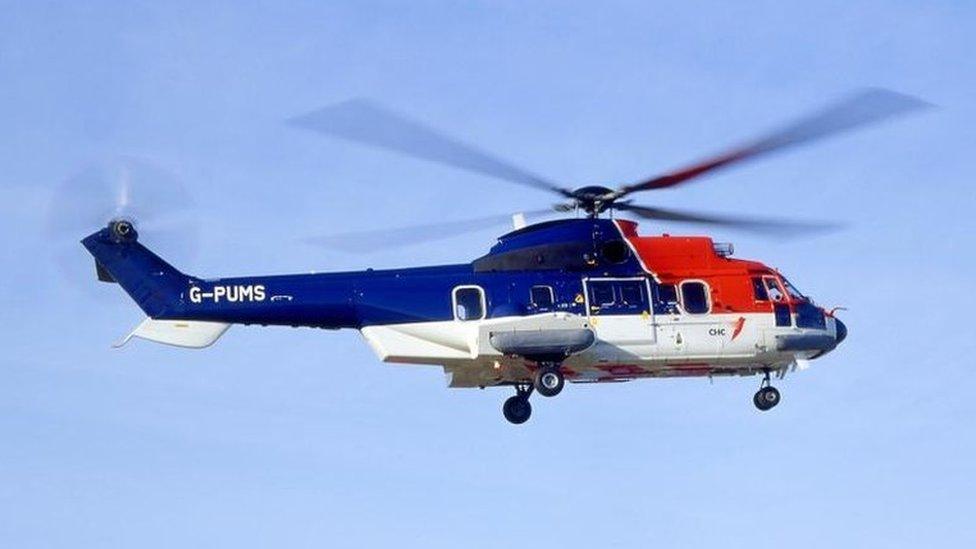Offshore worker dreads flying in fatal crash helicopter
- Published

A North sea offshore worker has told the BBC that he dreads flying in the Super Puma 225 helicopters again.
The UK Civil Aviation Authority (CAA) and the Norwegian authorities have allowed flights to resume if new safety conditions are met.
A crash involving the helicopter off the coast of Norway killed 13 people, including Iain Stewart from Aberdeenshire, in April 2016.
The worker said he could not tell his family if he had to fly in one again.
The man, who wished to remain anonymous, said: "When you go on everyone tries to go to sleep, so if something happens you are not going to know about it.
"You can't tell your kids that you're flying in a 225 because they worry and the last thing you want to do is to worry them when you're away"
The Super Puma 225 and L2 type helicopters were grounded following the fatal crash off Norway last year.
Offshore firms are yet to confirm whether they would use the aircraft again.
Unite union said that it would be inappropriate to lift any ban before the root cause of the 2016 accident is known.
The union's regional organiser in Aberdeen, Tommy Campbell, said Unite is "very disappointed and very angry" that the decision has been made before questions have been answered concerning last year's crash.

Thirteen people died after the Super Puma crash in April 2016
The CAA said that helicopters would not begin flying immediately and that a plan of checks, modifications and inspections will be undertaken before any flights take place.
These include:
Change in the design by removal of the components that were susceptible to premature deterioration
Earlier replacement of component
Design change to introduce an improved maintenance inspection method to detect any deterioration at an early stage
More frequent inspections
Reduction in the thresholds for rejecting components based upon early signs of any deterioration
CAA head of airworthiness John McColl said: "This is not a decision we have taken lightly. It has only been made after receiving extensive information from the Norwegian accident investigators and being satisfied with the subsequent changes introduced by Airbus Helicopters through detailed assessment and analysis."